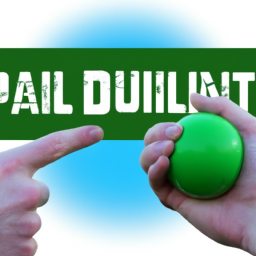Does Paintball Hurt Intro
Table of Contents []
Does A Paintball Hurt
Introduction
A lot of people are interested in playing paintball but have questions about the perceived pain involved with the sport. It's a thrilling way to enjoy the outdoors but without the right safety gear and knowledge of how the game works, you may be a little afraid of the pain that comes with it. That's why we are here to answer your questions about the sport and how intense the pain can be. We have a list of 8 to 12 relevant topics related to the question, Does paintball hurt? that we're going to delve into, so you can have a better understanding of what's involved with the paintball experience.
Safety Gear
The first thing to keep in mind is that if you're attending a paintball event, you should make sure you and everyone else participating is wearing the necessary safety gear; this includes safety glasses to protect your eyes, a full-face mask to guard your face, and a chest protector to guard your body. Not only will these protective items shield you from potential harm, but they will also make the sport less painful if and when you get hit.
Goggles
When it comes to choosing the right goggles to protect your eyes, it's important to make sure they are made for paintball. Many airsoft and tactical goggles are not designed to withstand the impact of a paintball. The goggles must be designed for paintball or you risk long-term damage.
Paintballs
The type of paintballs you are using will also make a difference in the pain level. Paintballs filled with light seeds, such as corn, will have a softer impact, but they may not burst on impact like heavier paintballs. Different brands and varieties of paintballs will also feature different hardness levels.
Velocity of Paintballs
The velocity of the paintballs can affect the level of pain you'll experience. Standard tournament velocity is between 280 and 300 feet per second. That's much faster than traditional paintball. In some countries, speed limits in paintball are even lower; certain European countries consider anything higher than 250 feet per second to be too fast.
Gun Load
The weight of the gun you're using will also affect the level of pain you feel. Heavier guns usually require more energy to move, which can cause an increase in pain.
Clothing
The clothing you wear can also protect you from the pain you'll experience. For example, wearing thicker clothing, such as shirts with extra padding, can help you soften the impact of the paintballs.
Atmosphere
The atmosphere you're playing in can also impact the speed of the paintballs and the level of pain you'll experience. If you're playing in a closed-off area, the paintball will stay at a consistent speed; however, if you are playing in an open area, the speed of the paintball could vary depending on the wind and weather conditions.
Hit Locations
The locations on your body that you get hit in can also play a role in how much pain you feel. Generally speaking, if you get hit in a soft area of your body (think arms, legs, etc), you'll likely feel a duller pain than if you were hit on a solid bone (think ribs or spine).
Checklist
To minimise the pain you'll experience when playing paintball, be sure to follow this checklist:
Wear the right safety gear
Choose paintball-specific goggles
Use the right paintballs
Maintain standard velocity
Use a lighter gun
Wear thicker clothing
Consider the atmosphere
Be mindful of where you're getting hit
Conclusion
It pays to be prepared when playing paintball in order to lessen the chance of getting hurt. Wearing the right safety gear and being mindful of the paintball velocity and weight you're dealing with are essential to avoid unnecessary injuries. Following the checklist above will help keep you safe and give you a fun and enjoyable paintball experience without the fear of increased pain levels.

Previous Page
Next Page
